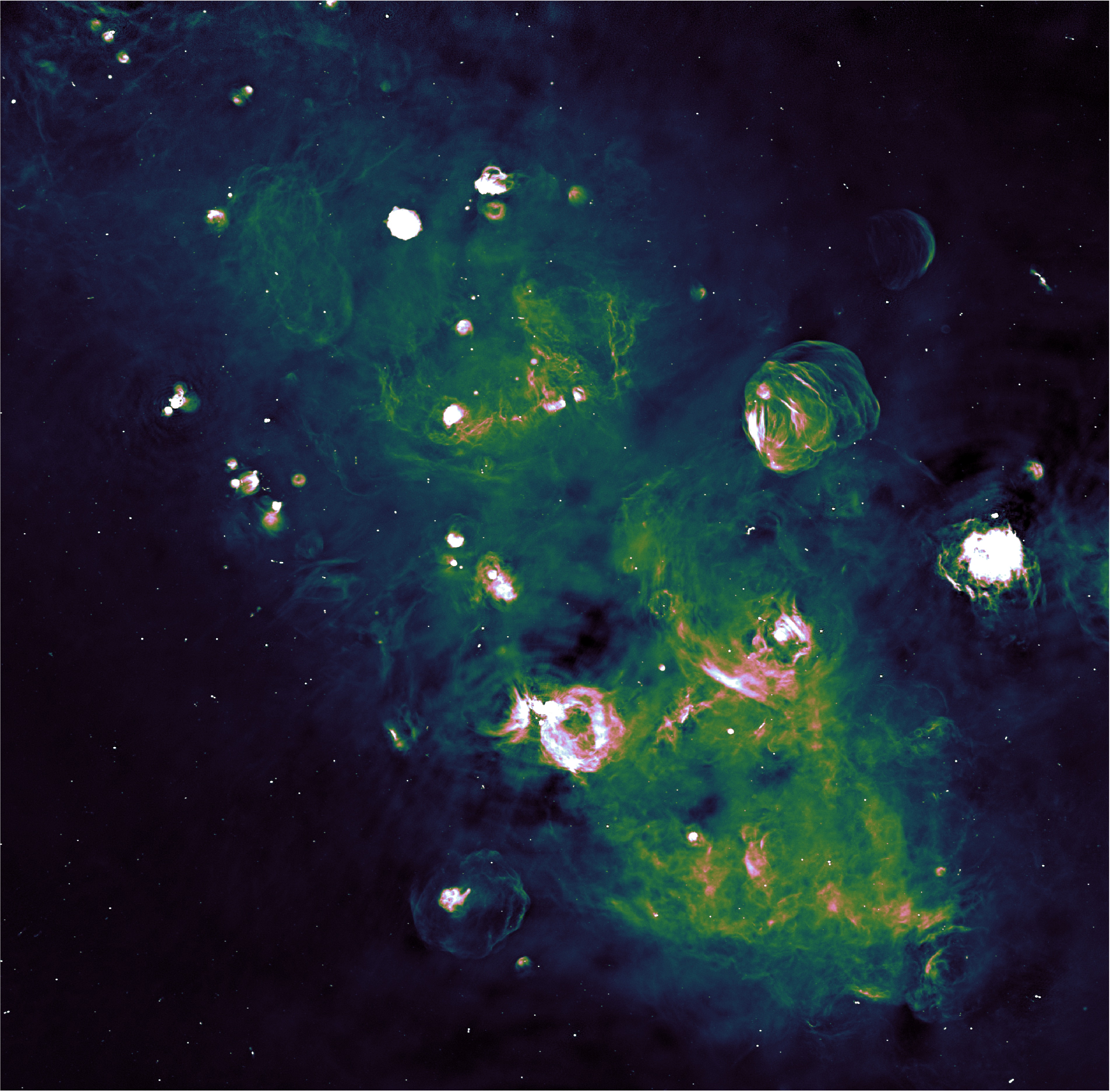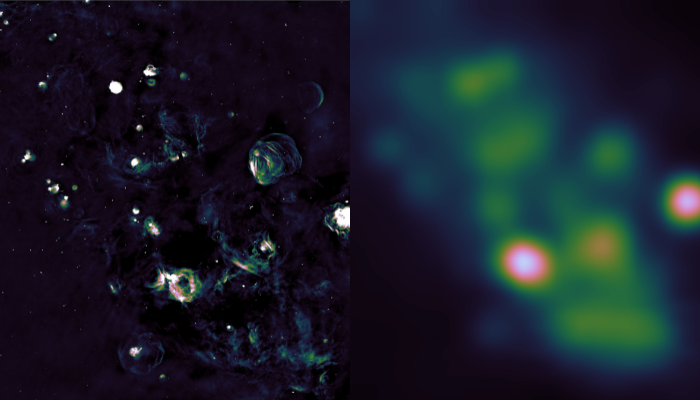Led by researchers at Macquarie University and Italy’s National Institute of Astrophysics (INAF), a portion of our Galaxy has been imaged in detail so great, we may be able to answer long-standing questions about the Milky Way’s stars.
A new radio astronomy image, created using the strengths of Australia’s two greatest radio telescopes, marks a stellar start to the new year. The image, which showcases the places of star births and deaths, is the most detailed radio image yet of our galaxy.
Radio observations of a large section of the galactic plane of the Milky Way were conducted with the ASKAP radio telescope and the Parkes radio telescope, Murriyang, both owned and operated by Australia’s national science agency, CSIRO, as part of the PEGASUS and EMU surveys. This is the first joint image to be released by the survey teams and its clarity hints that this survey may be able to answer the question, “where are all the supernova remnants?”.
This question has troubled astronomers for some time. Supernova remnants are what is left when a star dies. Models predict that, due to the age and density of the Milky Way, we should see the remnants of many, many stars that have lived and died. However, we have not yet had telescopes sensitive enough to detect these remnants, and scientists need to detect 5 times more remnants than are currently documented to match predictions.
The PEGASUS survey is one of the many projects building on the Evolutionary Map of the Universe (EMU) project and the POSSUM project, which both use ASKAP to learn more about our cosmos. PEGASUS has completed its pilot observations, and aims to observe the entire southern sky using the Parkes telescope in the next two years.
Professor Andrew Hopkins, Lead Scientist of the EMU Project, from Macquarie University, says the new composite image shows the galactic plane in its finest detail yet.
“This new picture showcases a region of the Milky Way, only visible to radio telescopes, where we can see extended emission associated with hydrogen gas filling the space between dying stars, related to the birth of new stars, and hot bubbles of gas called supernova remnants. Over twenty new possible supernova remnants have been discovered as a result of combining these images, where only seven were previously known.”
PhD student Brianna Ball from the University of Alberta in Canada, has conducted the work to help discover these new possible supernova remnants. It was her supervisor, Roland Kothes of the National Research Council of Canada, who put the image together.
“When Roland combined the PEGASUS map with that from the EMU and POSSUM observations, the result was marvellous; when we opened the image for the first time, we were amazed by such quality and beauty,” says Ettore Carretti, Leader of the PEGASUS project, from INAF.
“PEGASUS has captured a large region of the Galactic plane of our Galaxy full of supernova remnants, regions of ionising hydrogen and planetary nebulae, which, thanks to the combination of data from the ASKAP and Parkes telescopes, can be studied with extremely high precision and accuracy.”
With the quality of the new image being extremely clear, Professor Hopkins believes astronomers will be able to firm up their understanding of the Galaxy and beyond with future observations.
“The eventual results will be an unprecedented view of almost the entire Milky Way, about a hundred times larger than this initial image, but achieving the same level of detail and sensitivity. It is estimated that there may be about 1500 more supernova remnants in the galaxy that astronomers haven’t discovered yet. Finding the missing remnants will help us unlock more of an understanding of our galaxy and its history,” says Professor Hopkins.
ASKAP and Parkes are owned and operated by CSIRO, Australia’s national science agency, as part of the Australia Telescope National Facility. CSIRO acknowledge the Wajarri Yamaji people as the Traditional Owners and native title holders of Inyarrimanha Ilgari Bundara, the CSIRO Murchison Radio-astronomy Observatory, where ASKAP is located, and the Wiradjuri people as the traditional owners of the Parkes Observatory.

Both radio telescope images merged together. Credit: R. Kothes (NRC) and the PEGASUS team.

The individual radio telescope images side by side. Credit: (L to R) ASKAP: R. Kothes (NRC) and the EMU and POSSUM teams & Parkes: E. Carretti (INAF) and the PEGASUS team.